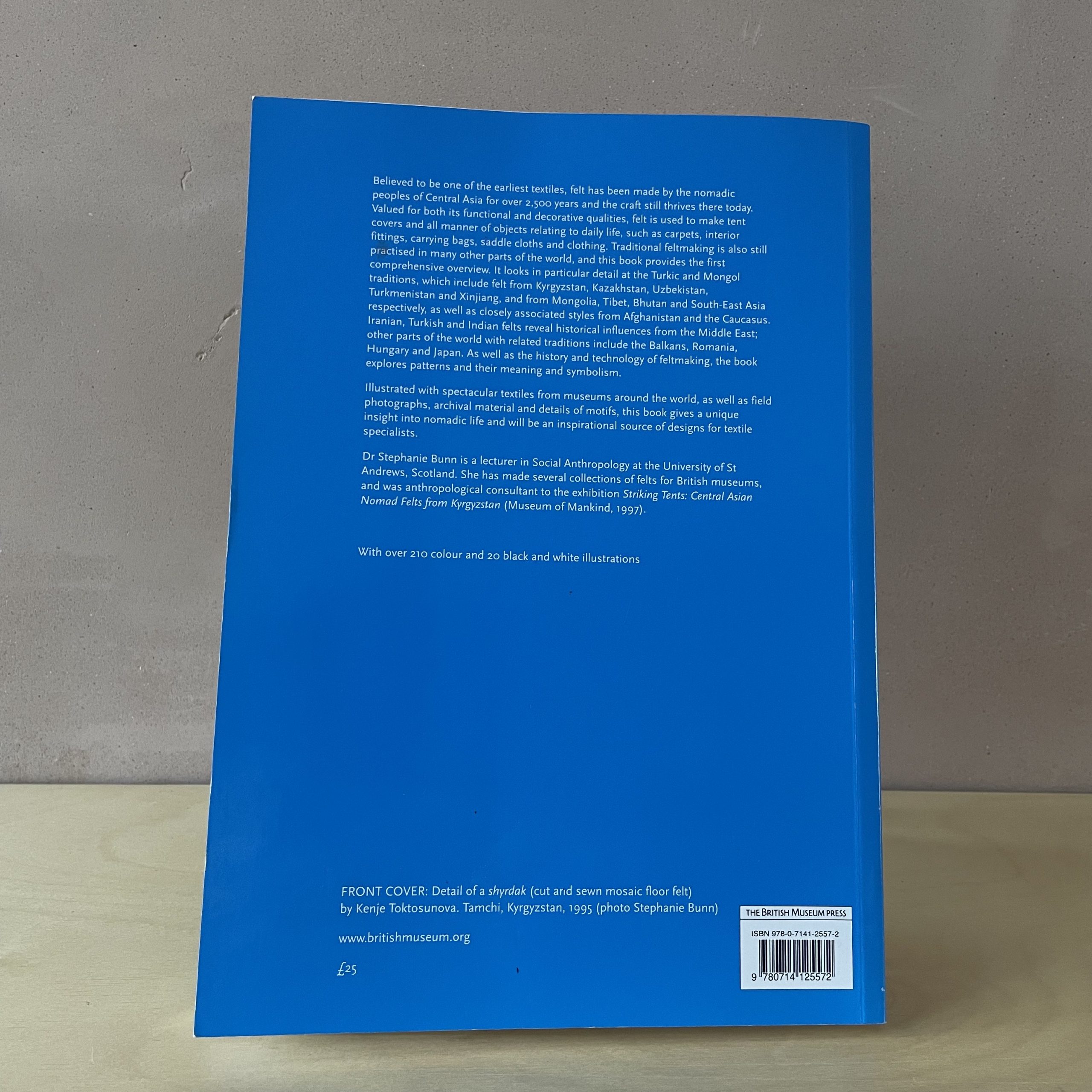Description
Nomadic Felts: Artistic Traditions in World Cultures
Believed to be one of the earliest textiles, felt has been made by the nomadic peoples of Central Asia fo over 2,500 years and the craft still thrives there today. Valued for both its function and decorative qualities, felt is used to make tent covers and all manner of objects relating to daily life, such as carpets, interior fittings, carrying bags, saddle cloths and clothing. Traditional feltmaking is also still practised in many other parts of the world, and this book provides the first comprehensive overview. It looks in particular detail at the Turkic and Mongol traditions, which include felt from Kyrgyzstan, Kazakhstan, Uzbekistan, Turkmenistan and Xinjiang, and from Mongolia, Tibet, Bhutan and South-East Asia respectively, as well as closely associated styles from Afghanistan and the Caucasus.
Iranian, Turkish and Indian felts reveal historical influences from the Middle East; other parts of the world with related traditions include the Balkans, Romania, Hungary and Japan. As well as the history and technology of feltmaking, the book explores patterns and their meaning and symbolism.
Illustrated with spectacular textiles from museums around the world, as well as field photographs, archival material and details of motifs, this book gives a unique insight into nomadic life and will be an inspirational source of designs for textile specialists
Dr Stephanie Bunn is a lecturer in Social Anthropology at the University of St Andrews, Scotland. She has made several collections of felts for British museums, and was anthropological consultant to the exhibition Striking Tents: Central Asian Nomad Felts from Kyrgyzstan (Museum of Mankind, 1997).
With over 210 colour and 20 black and white illustrations
Nomadic Felts: Artistic Traditions in World Cultures, Stephanie Bunn, The British Museum Press, 2010
First edition. Paperback. Minor shelf wear. Very good condition.






